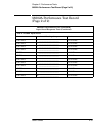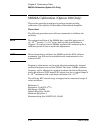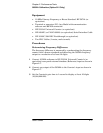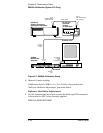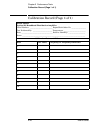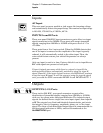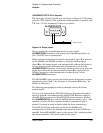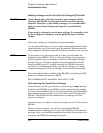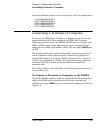
Chapter 3 Features and Functions
Inputs
User’s Guide 3-3
Inputs
AC Input
This rear-panel ac power module or jack senses the incoming voltage
and automatically selects the proper setup. The nominal ac input range
is 100-132, 175-240 Vac, 47-63 Hz, 40 VA.
INPUTS A and B Ports
These rear-panel 50Ω BNC input connectors or ports allow two-input
signal connection to the 58502A. These ports will accept sinusoidal
signals, ranging from 100 kHz to 10 MHz with power level of +7 to
+15 dBm.
These ports form a 2-to-1 auto-switch. When the 58502A detects that
one of its inputs is removed or the amplitude of the input is greatly
reduced, it will automatically switch to the other input. Thus, the
auto-switch feature ensure your critical frequencies are always
present.
Only one input is used at a time. Factory default is set to input A over
B if valid signals are present at both ports.
If input A signal goes away while there is a signal at input B, the
auto-switching feature automatically switches to using the input B
signal. However, if the input A signal returns, the 58502A will continue
to use the input B signal. It will not return to using the input A signal
until you send the SCPI commands INP:SEL A and INP:SEL:AUTO 1.
Outputs
OUTPUTS (1-12) Ports
These twelve 50Ω BNC, rear-panel connectors or ports allow
distribution of sinusoidal
signals (ranging from 100 kHz to 10 MHz)
with very low phase noise and signal distortion. The isolated output
signals are derived from a single sine wave input signal, from input A
or B. The outputs have fixed and identical characteristics, and retain
the integrity (that is, frequency, amplitude, phase, etc.) of the input
signal. The state of each distributed output signal is communicated via
the front-panel indicators or LEDs, and can be monitored at the
ALARM/STATUS port.
~AC Input
100-240 VAC 50/60GHz
40 VA Max
!
AB
INPUTS
5 VRMS MAX
!
1 2 11 12
OUTPUTS



